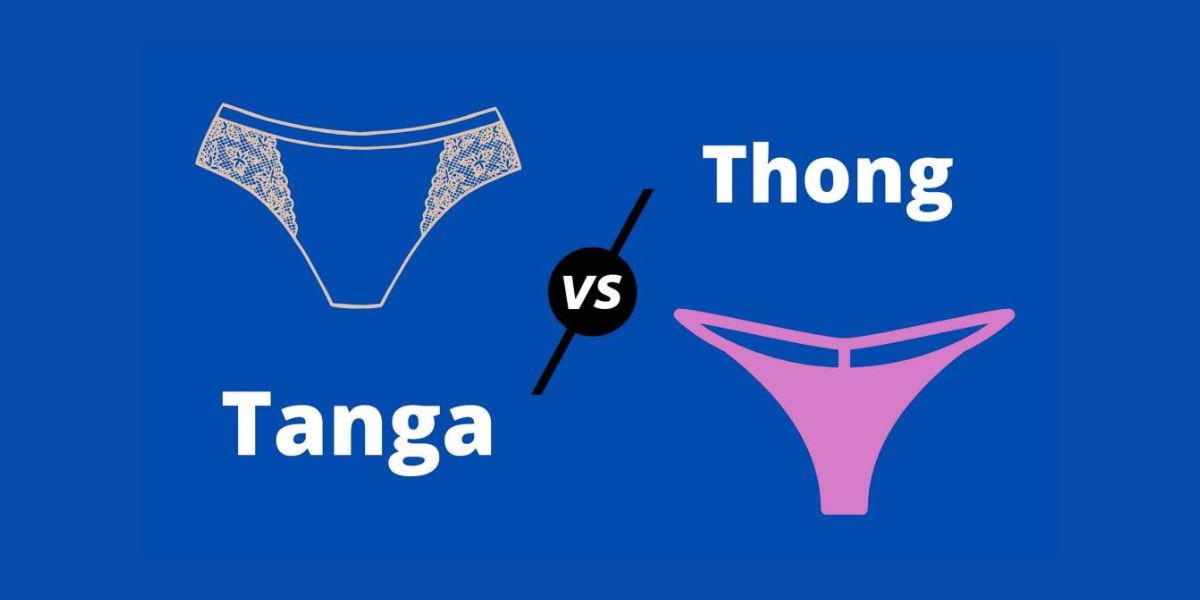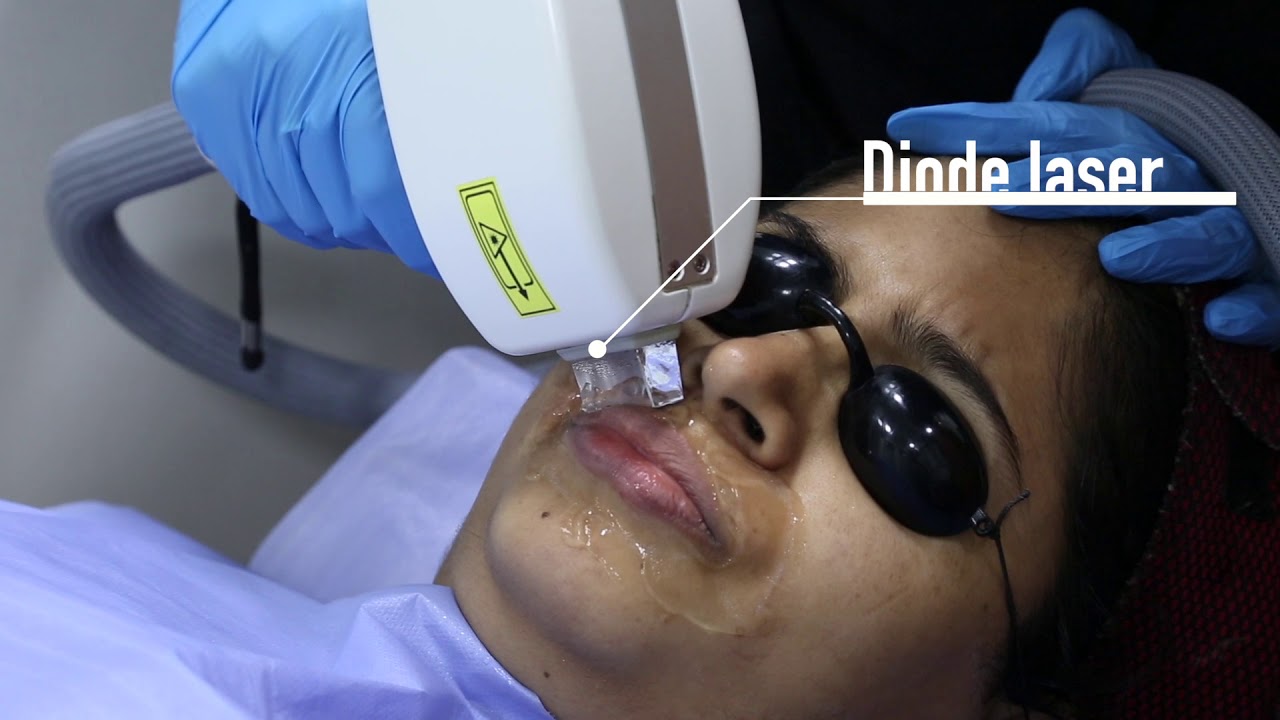Home>FAQs>What Is The Difference Between Laser Hair Removal And Electrolysis


FAQs
What Is The Difference Between Laser Hair Removal And Electrolysis
Modified: September 23, 2023
Discover the key distinctions between laser hair removal and electrolysis procedures. Find out which method suits your needs in terms of effectiveness, comfort, and cost.
(Many of the links in this article redirect to a specific reviewed product. Your purchase of these products through affiliate links helps to generate commission for Under-tec.com, at no extra cost. Learn more)
Table of Contents
- Introduction
- Explanation of Laser Hair Removal
- Procedure of Laser Hair Removal
- Benefits of Laser Hair Removal
- Limitations of Laser Hair Removal
- Explanation of Electrolysis
- Procedure of Electrolysis
- Benefits of Electrolysis
- Limitations of Electrolysis
- Comparison of Laser Hair Removal and Electrolysis
- Conclusion
Introduction
Laser hair removal and electrolysis are two popular methods for achieving long-term hair removal. Both provide effective solutions for reducing unwanted hair, but they differ in terms of procedure, benefits, and limitations. Understanding the differences between laser hair removal and electrolysis is crucial in order to make an informed decision about which method is best suited for individual needs and preferences.
Laser hair removal utilizes advanced laser technology to target and destroy hair follicles, resulting in permanent hair reduction. It is a non-invasive procedure that is commonly used to treat larger areas of the body such as the legs, back, and bikini area. On the other hand, electrolysis is a method that involves inserting a fine probe into individual hair follicles to deliver a small amount of electrical current, permanently disabling the follicles. It is a versatile technique that can be used on various areas of the body, including the face, underarms, and bikini line.
Both laser hair removal and electrolysis have their own advantages and limitations. Laser hair removal is known for its speed and efficiency, with each session lasting only a few minutes to an hour, depending on the size of the treated area. Multiple sessions are typically required to achieve optimal results. Additionally, laser hair removal is relatively painless compared to electrolysis, with many individuals describing the sensation as a mild rubber band snap on the skin.
Electrolysis, on the other hand, is considered the only permanent hair removal method approved by the Food and Drug Administration (FDA). It can target all hair colors and skin types, making it suitable for individuals who may not be ideal candidates for laser hair removal. However, electrolysis is a more time-consuming process, as each hair follicle needs to be treated individually. The discomfort can vary depending on the individual’s pain tolerance, with some describing it as a stinging or pricking sensation.
In the following sections, we will delve deeper into the procedures, benefits, and limitations of both laser hair removal and electrolysis, allowing you to make an educated decision on which method aligns best with your hair removal goals and preferences.
Explanation of Laser Hair Removal
Laser hair removal is a popular cosmetic procedure designed to permanently reduce or eliminate unwanted hair on various parts of the body. This technique utilizes highly concentrated beams of light, or lasers, to target the pigment in the hair follicles. The intense heat generated by the laser damages the hair follicles, inhibiting future hair growth in the treated area.
The procedure begins with a thorough consultation with a trained professional who will assess the individual’s skin type, hair color, and medical history to determine if they are a suitable candidate for laser hair removal. It is important to note that laser hair removal is most effective on individuals with darker hair and lighter skin tones. However, advancements in technology have made it possible to treat a wider range of skin and hair types.
During the actual treatment, the individual may be asked to wear protective eyewear to shield their eyes from the laser light. The technician will adjust the laser settings based on the specific needs of the individual, such as the thickness and density of their hair. The laser is then applied to the treatment area, delivering quick pulses of light that penetrate the hair follicles.
One of the key benefits of laser hair removal is its precision. The laser targets the hair follicles without damaging the surrounding skin, resulting in minimal discomfort during the procedure. However, some individuals may experience a slight stinging or snapping sensation as the laser heats the hair follicles. To alleviate any discomfort, a cooling gel or topical anesthetic may be applied prior to the treatment.
It is important to note that laser hair removal is not a one-time treatment. Multiple sessions are typically required to achieve the desired results. This is because the laser can only effectively target hair follicles in the active growth phase, known as the anagen phase. Since not all hair follicles are in this phase at the same time, multiple sessions are necessary to catch each follicle in the active growth phase.
It is also worth mentioning that laser hair removal requires some preparation and aftercare. Prior to the treatment, individuals may be advised to avoid sun exposure, waxing, plucking, or any other hair removal methods that disturb the hair follicles. After the treatment, it is important to protect the skin from the sun and follow any post-treatment instructions provided by the technician.
Overall, laser hair removal offers an effective and long-lasting solution for reducing unwanted hair. It provides a more efficient alternative to traditional hair removal methods like shaving, waxing, and plucking. However, it is essential to consult with a qualified professional to determine if laser hair removal is suitable for your specific needs.
Procedure of Laser Hair Removal
The procedure of laser hair removal involves several steps to ensure safe, effective, and long-lasting results. Here is a breakdown of the typical process for laser hair removal:
- Consultation: The first step in laser hair removal is a consultation with a certified professional. During this session, the technician will assess your skin type, hair color, and medical history to determine if you are a suitable candidate for the procedure. They will also discuss your expectations, answer any questions you may have, and explain the process in detail.
- Preparation: Before the actual treatment, it is important to prepare the treatment area properly. This may involve shaving the area a day or two before the session. You may also be advised to avoid sun exposure and tanning beds, as well as certain hair removal methods like waxing or plucking that can disturb the hair follicles.
- Protection: To protect your eyes from the laser, you will be provided with protective goggles. The technician will also apply a cooling gel or numbing cream to the treatment area to minimize discomfort during the procedure.
- Laser application: The technician will adjust the laser settings based on factors such as your skin tone, hair color, and the thickness of the hair being treated. They will then apply the laser to the targeted area, emitting rapid pulses of light that are absorbed by the pigment in the hair follicles.
- Sensation: During the treatment, you may experience a slight snapping or stinging sensation as the laser heats the hair follicles. However, most individuals find the discomfort to be tolerable, often describing it as a rubber band snap on the skin. If needed, the technician can adjust the settings or provide additional cooling methods to minimize discomfort.
- Post-treatment care: After the laser hair removal session, it is important to follow any post-treatment instructions provided by the technician. This may include avoiding sun exposure, using sunscreen, and refraining from activities that may irritate the treated area.
It is important to note that laser hair removal is not a one-time treatment. Multiple sessions are usually required to achieve the desired results. The number of sessions depends on various factors such as the area being treated, your hair growth cycle, and individual response to the treatment. Usually, sessions are spaced several weeks apart to target hair follicles at different stages of the growth cycle.
After a series of treatments, the gradual reduction in hair growth will become noticeable. The treated hair will become finer, lighter, and sparse. While laser hair removal offers long-lasting results, occasional maintenance sessions may be required to target any new hair growth that occurs over time.
Before undergoing laser hair removal, it is essential to consult with a qualified professional who can assess your unique needs and ensure that the procedure is safe and appropriate for you. This will help you achieve the best possible results and experience the benefits of this advanced hair removal technique.
Benefits of Laser Hair Removal
Laser hair removal offers a range of benefits that make it a popular choice for individuals seeking long-term reduction or elimination of unwanted hair. Here are some of the key advantages of laser hair removal:
- Effective and long-lasting: Laser hair removal provides long-lasting results compared to temporary hair removal methods such as shaving, waxing, or plucking. The laser targets the hair follicles, damaging them and inhibiting future hair growth. With multiple sessions, many individuals experience permanent hair reduction in the treated areas.
- Speed and efficiency: Laser hair removal can treat large areas of the body relatively quickly. Each laser pulse covers a significant area, which means larger areas like the legs, back, or chest can be treated in a relatively short amount of time. This makes it a convenient option for those with busy schedules.
- Precision and versatility: Laser hair removal is a precise technique that selectively targets the hair follicles without causing harm to the surrounding skin. It can be performed on various areas of the body, including the face, underarms, bikini line, and more. It is also suitable for both men and women with different skin types and hair colors.
- Minimal discomfort: Unlike traditional hair removal methods that can cause pain, discomfort, or irritation, laser hair removal is generally well-tolerated. Individuals may experience a mild stinging or snapping sensation during the procedure, but it is often described as tolerable. Cooling methods and topical numbing creams can be used to further minimize any discomfort.
- No downtime: Laser hair removal is a non-invasive procedure that does not require any downtime. Individuals can resume their normal activities immediately after the treatment. This makes it a convenient option for those with busy lifestyles.
- Reduction in ingrown hairs: One of the additional benefits of laser hair removal is the reduction in ingrown hairs. The procedure targets the hair follicles, reducing the likelihood of hair becoming trapped beneath the skin’s surface. This can help alleviate the discomfort and appearance of ingrown hairs.
It is important to note that the effectiveness and experience of laser hair removal may vary depending on individual factors such as skin type, hair color, and hormonal changes. Consulting with a qualified professional is crucial to assess your suitability for the treatment and to ensure personalized care and optimal results.
Overall, laser hair removal offers a long-lasting solution for unwanted hair, providing individuals with smooth and hair-free skin. Its effectiveness, speed, precision, and minimal discomfort make it a popular choice for those who desire a more permanent hair removal method.
Limitations of Laser Hair Removal
While laser hair removal offers numerous benefits, it is important to consider its limitations to make an informed decision about whether it is the right hair removal method for you. Here are some of the key limitations of laser hair removal:
- Effectiveness on specific hair and skin types: Laser hair removal works best on individuals with dark hair and light skin tones. The laser targets the pigment in the hair follicles, so individuals with lighter hair colors may experience less effective results. Similarly, individuals with darker skin tones may have a higher risk of experiencing skin discoloration or burns due to the laser’s interaction with the melanin in the skin.
- Multiple sessions required: Achieving optimal results with laser hair removal requires multiple treatment sessions. This is because the procedure is most effective on hair follicles in the active growth phase, and not all hair follicles are in this phase at the same time. Typically, several sessions spaced several weeks apart are necessary to target all hair follicles in the desired area.
- Not suitable for certain areas: Laser hair removal can be performed on various areas of the body, but there are certain areas where it may be less effective or not recommended. These include areas around the eyes, ears, and genitals. Additionally, laser hair removal on tattoos can cause damage to the tattoo pigments, so caution should be exercised when treating areas with tattoos.
- Potential side effects: Like any cosmetic procedure, laser hair removal carries some potential side effects. These may include temporary redness, swelling, itching, or discomfort in the treated area. In rare cases, more serious side effects such as burns, blisters, or changes in skin pigmentation may occur. It is crucial to choose a certified professional and follow proper aftercare instructions to minimize these risks.
- Cost considerations: Laser hair removal is a specialized procedure that requires the expertise of trained professionals. This can make it a relatively costly option compared to traditional hair removal methods such as shaving or waxing. The total cost will depend on factors such as the size of the treated area, the number of sessions required, and the location and reputation of the clinic.
- Hair reduction rather than complete removal: Although laser hair removal can significantly reduce hair growth in the treated area, it may not completely remove all hair follicles. Some hair follicles may be resistant to the laser or may regenerate over time. Therefore, periodic maintenance sessions may be needed to address any hair growth that occurs after the initial treatment.
Despite these limitations, laser hair removal remains a popular and effective hair removal option for many individuals. It is important to consult with a qualified professional to assess your suitability for the procedure and to discuss any potential concerns or limitations specific to your unique circumstances.
Explanation of Electrolysis
Electrolysis is a method of hair removal that has been used for over a century and is recognized as the only permanent hair removal technique approved by the Food and Drug Administration (FDA). It involves the insertion of a fine probe, typically a sterile needle, into individual hair follicles. A small amount of electrical current is then applied through the probe, either through direct current or alternating current.
The electrical current emitted during electrolysis damages the hair follicles, eventually leading to their destruction. This prevents future hair growth and offers a permanent solution to unwanted hair. Electrolysis is a versatile technique that can be used on various parts of the body, including the face, underarms, bikini line, and more.
One of the key advantages of electrolysis is that it can be performed on individuals with different types of hair and skin color, making it suitable for individuals who may not be good candidates for laser hair removal. This is because electrolysis targets the individual hair follicles and is not dependent on the pigment present in the hair.
The procedure of electrolysis begins with a consultation with a trained professional who will assess your suitability for the treatment. The technician will determine the appropriate settings for the electrical current based on factors like the thickness and location of the hair.
During the treatment session, the technician will insert a fine probe into each hair follicle individually. The electrical current is then applied, which is intended to destroy or damage the targeted hair follicles. The sensation experienced during electrolysis can vary from person to person, with some individuals describing it as a stinging or pricking sensation. However, topical anesthetic creams can be used to minimize any discomfort.
It is worth mentioning that electrolysis is a time-consuming process. This is because each hair follicle needs to be treated individually, resulting in longer treatment sessions compared to other hair removal methods. The number of sessions required varies depending on factors such as the size of the area being treated, the density of hair, and individual response to the treatment.
After each electrolysis session, it is common to experience some redness, swelling, or temporary skin irritation in the treated area. However, these side effects typically subside within a few hours or days. It is important to follow any aftercare instructions provided by the technician to ensure proper healing and minimize any potential complications.
Overall, electrolysis offers a permanent solution for unwanted hair and can be a suitable option for individuals with different skin and hair types. However, it is essential to consult with a qualified professional to determine if electrolysis is the right choice for your specific needs and to receive personalized care throughout the treatment process.
Procedure of Electrolysis
The procedure of electrolysis involves a series of steps to permanently remove unwanted hair. Here is an outline of the typical process:
- Consultation: The first step in electrolysis is a consultation with a certified electrologist. During this session, the electrologist will assess your skin type, hair color, and unique needs to determine if you are a suitable candidate for the treatment. They will also explain the process, answer any questions you may have, and discuss your treatment goals.
- Preparation: Before the treatment, the treatment area needs to be clean and free of any lotions, makeup, or oils. You may be advised to avoid sun exposure or any other hair removal methods that can disturb the hair follicles before the session.
- Insertion of the probe: The electrologist will insert a fine, sterile probe into each individual hair follicle. The probe is designed to deliver a small amount of electrical current directly to the hair follicle, which damages it and impedes future hair growth.
- Application of current: Once the probe is inserted, the electrologist will apply the appropriate current to the hair follicle. The current can be either direct current (DC), which delivers a steady flow of electricity, or alternating current (AC), which delivers electricity in rapid pulses. The choice of current depends on several factors, including the area being treated and the individual’s hair and skin type.
- Sensation: During the treatment, you may experience a sensation that is often described as a stinging or pricking feeling. The intensity of the sensation can vary depending on your pain tolerance, the treatment area, and individual factors. If needed, the electrologist can adjust the settings or use topical anesthetics to minimize any discomfort.
- Post-treatment care: After each electrolysis session, you may experience some redness, swelling, or skin sensitivity in the treated area. These side effects are typically temporary and subside within a few hours or days. The electrologist will provide you with specific aftercare instructions, which may include avoiding sun exposure, applying soothing creams, and avoiding any activities that may irritate the treated area.
It is important to note that electrolysis is a gradual process, and multiple sessions are usually required to achieve the desired results. The number of sessions depends on factors such as the size of the treatment area, the density of hair, and individual response to the treatment.
As electrolysis targets each individual hair follicle, the treatment time can be longer compared to other hair removal methods. However, the advantage of electrolysis is that it is effective for all hair colors and skin types, making it a versatile option for individuals who may not be ideal candidates for other hair removal techniques.
Choosing a qualified and experienced electrologist is crucial to ensure safe and effective treatment. They will assess your unique needs, provide personalized care, and ensure proper hygiene and sterilization of the equipment.
By following the recommended treatment plan and adhering to the aftercare instructions, electrolysis can provide a permanent solution for unwanted hair and help you achieve smooth and hair-free skin.
Benefits of Electrolysis
Electrolysis is a popular hair removal method that offers several benefits, making it a preferred choice for individuals seeking permanent hair reduction. Here are some of the key advantages of electrolysis:
- Permanent hair removal: Electrolysis is the only hair removal technique approved by the FDA for permanent hair removal. It targets the individual hair follicles and destroys them, preventing further hair growth. With consistent and proper treatment, electrolysis can provide long-lasting results, keeping the treated areas free from unwanted hair.
- Effective for all hair colors and skin types: Unlike certain hair removal methods, electrolysis can be performed on individuals with different hair colors and skin tones. It is not dependent on the hair pigment, making it an ideal option for individuals with light-colored, gray, or blonde hair that may be difficult to treat with other methods.
- Targeted treatment: Electrolysis focuses on treating individual hair follicles, making it highly targeted and precise. This allows for more control and customization in the treatment process, ensuring that each hair follicle is treated effectively.
- Versatility: Electrolysis can be applied to various parts of the body, including the face, underarms, arms, legs, bikini line, and more. It offers a versatile solution for individuals looking to remove unwanted hair from different areas.
- Reduced risk of skin damage: Electrolysis targets the hair follicles without affecting the surrounding skin, reducing the risk of skin damage or irritation. This makes it a safe and effective option for individuals with sensitive skin or those who may have experienced adverse effects from other hair removal techniques.
- Improved confidence and convenience: By permanently removing unwanted hair, electrolysis can help boost self-confidence and improve body image. It eliminates the need for frequent and time-consuming hair removal methods such as shaving, waxing, or plucking, providing a more convenient and hassle-free solution.
It is important to note that electrolysis requires a commitment of time and patience. The process of permanently removing hair follicles is gradual and may require multiple sessions to achieve the desired results. The number of sessions needed will depend on factors such as the size of the area being treated, the density of the hair, and individual response to the treatment.
Choosing a qualified and experienced electrologist is essential to ensure safe and effective treatment. They will assess your unique needs, provide personalized care, and guide you through the treatment process. Additionally, following the aftercare instructions provided by the electrologist can help optimize the results and minimize any potential side effects.
Overall, electrolysis offers a permanent solution for unwanted hair, regardless of hair color or skin type. It provides targeted and effective treatment, resulting in long-lasting hair removal and improved self-confidence.
Limitations of Electrolysis
While electrolysis is a proven method for permanent hair removal, it is important to consider its limitations when deciding if it is the right choice for you. Here are some of the key limitations of electrolysis:
- Time-consuming: Electrolysis is a time-consuming process, especially when compared to other hair removal methods. This is because each hair follicle needs to be treated individually, which can be a lengthy process, especially for larger areas. The number of sessions required also varies depending on factors such as the size of the treated area, the density of hair, and individual response to the treatment.
- Discomfort: Electrolysis can cause discomfort during the treatment. Some individuals may experience a slight stinging or pricking sensation as the electrical current is applied to the hair follicles. While topical numbing creams can be used to minimize the discomfort, it is important to be prepared for the potential sensation during the treatment process.
- Potential side effects: Like any cosmetic procedure, electrolysis carries the risk of potential side effects. These may include temporary redness, swelling, or skin sensitivity in the treated area. In rare cases, more serious side effects such as scabbing, scarring, or changes in skin pigmentation may occur. Choosing a qualified and experienced electrologist and following proper aftercare instructions can help minimize these risks.
- Effectiveness on different hair colors and skin types: While electrolysis is suitable for individuals with various hair colors and skin types, it may be less effective on light-colored or fine hair. This is because the electrical current is most effective when targeting melanin, the pigment present in darker hair. Additionally, individuals with darker skin tones may have a higher risk of experiencing skin discoloration or burns due to the interaction of the electrical current with the melanin in the skin.
- Cost considerations: Electrolysis can be a costly hair removal method compared to other temporary methods such as shaving or waxing. The total cost will depend on factors such as the size of the treated area, the number of sessions required, and the location and expertise of the electrologist. However, it is important to consider the long-term benefits of permanent hair removal that electrolysis offers.
- Regrowth due to hormone changes: While electrolysis aims to permanently remove hair, hormonal changes that occur over time can lead to new hair growth. This is more common in areas prone to hormonal influence, such as the chin or upper lip. Periodic maintenance sessions may be required to address any new hair growth that occurs.
It is crucial to consult with a qualified electrologist who can assess your individual needs, evaluate your suitability for the treatment, and address any concerns or limitations specific to your unique circumstances. Understanding the limitations of electrolysis will help you make an informed decision and ensure that your expectations align with the potential outcomes of the treatment.
Comparison of Laser Hair Removal and Electrolysis
Both laser hair removal and electrolysis are effective methods for achieving long-term hair removal, but they differ in various aspects. Here is a comparison of the key factors to consider when choosing between laser hair removal and electrolysis:
- Efficacy: Laser hair removal and electrolysis are both considered effective methods for hair removal, but electrolysis is the only method recognized as permanent hair removal by the FDA. Laser hair removal, on the other hand, provides long-term hair reduction but may require occasional maintenance sessions to address any new hair growth.
- Targeted Areas: Laser hair removal is well-suited for larger areas of the body due to its speed and efficiency. It is commonly used on areas such as the legs, back, or bikini line. Electrolysis, on the other hand, can be used on various body parts, including smaller and more delicate areas such as the face, underarms, and bikini line.
- Treatment Time: Laser hair removal sessions are typically faster than electrolysis sessions since the laser can cover a larger treatment area at once. Electrolysis, as it treats hair follicles individually, is a more time-consuming process, especially for larger areas or dense hair growth.
- Applicability to Hair and Skin Color: Laser hair removal is most effective for individuals with dark hair and lighter skin tones. It primarily targets the melanin in the hair follicles, making it less effective for lighter or fine hair. Electrolysis, on the other hand, can be used on all hair colors and skin types since it targets individual hair follicles rather than relying on the hair pigment.
- Discomfort: While both treatments may cause some discomfort, the level of discomfort can vary. Laser hair removal is often described as a mild rubber band snap on the skin, while electrolysis may cause a pricking or stinging sensation during the process.
- Number of Sessions: Laser hair removal typically requires multiple sessions to achieve optimal results. The number of sessions can vary depending on factors such as the treatment area, hair density, and individual response. Electrolysis also requires multiple sessions but may require more overall due to its individual hair follicle approach.
- Cost: The cost of laser hair removal and electrolysis can vary depending on factors such as the size of the treated area, the number of sessions needed, and the location. Laser hair removal generally tends to be more affordable since it requires fewer sessions overall, while electrolysis may involve additional sessions and thus incur higher costs.
It is important to note that the choice between laser hair removal and electrolysis depends on individual preferences, hair and skin type, treatment goals, and budget. Consulting with a certified professional or dermatologist is recommended to determine the most suitable method for your specific needs.
Ultimately, both laser hair removal and electrolysis offer effective solutions for long-term hair removal. Understanding their differences will help you make an informed decision and select the method that best aligns with your goals and expectations.
Conclusion
When it comes to long-term hair removal, both laser hair removal and electrolysis offer effective solutions with their own set of benefits and limitations. Laser hair removal is a popular choice for individuals looking for quick, efficient, and relatively painless hair reduction on larger areas of the body. It is effective for individuals with darker hair and lighter skin tones, providing long-lasting results with minimal discomfort.
On the other hand, electrolysis is renowned for being the only FDA-approved permanent hair removal method. It is a versatile technique that can be used on various body parts, and it works for all hair colors and skin types. Although it requires more time and individual hair follicle treatment, electrolysis offers a permanent solution to unwanted hair, making it suitable for individuals who may not find laser hair removal viable.
Ultimately, the choice between laser hair removal and electrolysis depends on individual factors such as hair and skin type, treatment goals, budget, and personal preferences. Consulting with a qualified professional is essential to assess your unique needs and determine the most suitable method for you.
Both methods have their strengths and limitations, and understanding their differences is crucial in making an informed decision. While laser hair removal provides faster, more efficient treatment for larger areas of the body, electrolysis offers permanent hair removal for individuals with different hair colors and skin types.
It is important to carefully consider the benefits and limitations discussed in this article, as well as consult with a certified professional, to determine which method aligns best with your goals, lifestyle, and budget. Regardless of the method chosen, both laser hair removal and electrolysis offer effective hair reduction options that can enhance your confidence and provide long-lasting results.









